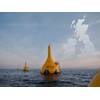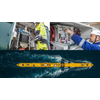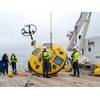Launch of 'The Jefferson Project at Lake George NY'
Rensselaer Polytechnic Institute, IBM (NYSE: IBM), and the FUND for Lake George announce the launch of “The Jefferson Project at Lake George,” a 3-year, multi-million dollar collaboration with the goal of understanding and managing complex factors in the waters of the lake.
Lake George, about 50 miles north of Albany in upstate New York, is known internationally for its crystal-clear waters with a depth of up to 200 feet. Rich in natural and cultural history, it is 32 miles long and up to 2.5 miles wide, formed nearly 10,000 years ago by melting glaciers. Negative impacts on Lake George include road salt, storm water runoff and invasive species, threatening one of the world’s most pristine natural ecosystems and an economic cornerstone of the New York tourism industry.
The Jefferson Project, an homage to President Thomas Jefferson’s declaration of Lake George as “without comparison, the most beautiful water I ever saw,” aims to establish one of the world’s most sophisticated lake environmental monitoring and prediction systems giving scientists and the community a real-time picture of the health of the lake.
http://www.rpi.edu/dept/DFWI/
Lake George is a headwater lake, meaning it has limited external influences on water quality which contributes to its New York State water quality rating of Class AA-Special. Lake George is an ideal body of water to study due to its size and unique ecosystem. Approximately 95 percent of the land surrounding Lake George remains as natural forestland, 46 percent of which is "forever wild" state-owned forest preserve.
Scientists from Rensselaer have been studying the Lake for 30 years and have noted the emergence of environmental stressors that include rising levels of chlorophyll that threatens water clarity and a threefold increase in salt levels primarily due to road salt applied to roads in the watershed.
The collaboration partners plan to use a combination of advanced data analytics, computing and data visualization techniques, new scientific and experimental methods, 3-D computer modeling and simulation, and historical data expecting to gain an unprecedented scientific understanding of Lake George.
Also central to the project will be weather modeling and sensor technology similar to those used by IBM around the world at locations including Rio de Janeiro, Ireland’s Galway Bay, and New York’s Hudson River. The combination of these unique predictive capabilities will enable scientists and the community to prioritize and act before permanent degradation can take place.
“Lake George has a lot to teach us, if we look closely,” said Rensselaer President Shirley Ann Jackson. “By expanding Rensselaer’s Darrin Fresh Water Institute with this remarkable new cyberphysical platform of data from sensors and other sources, and with advanced analytics, high performance computing, and web science, we are taking an important step to protect the timeless beauty of Lake George, and we are creating a global model for environmental research and protection of water resources.”














 August 2025
August 2025



